Safety Tips for Hiking in Iceland’s Remote Wilderness
| All, highlands, TIPS AND TRICKS
Table of Contents
Iceland’s remote landscapes offer some of the most breathtaking and challenging hiking experiences in the world. From volcanic fields to glaciers, arctic deserts, and untamed rivers, the terrain is as diverse as it is unforgiving. While the allure of exploring these untouched wilderness areas is strong, preparation and safety are paramount. Hiking in these regions demands respect for nature's power and an understanding of the unique risks involved.
In this guide, we’ll cover essential safety tips to help you plan your hike, navigate Iceland's unpredictable weather, choose the right gear, and respond to emergencies to equip you with the knowledge to enjoy Iceland’s wilderness safely and responsibly.
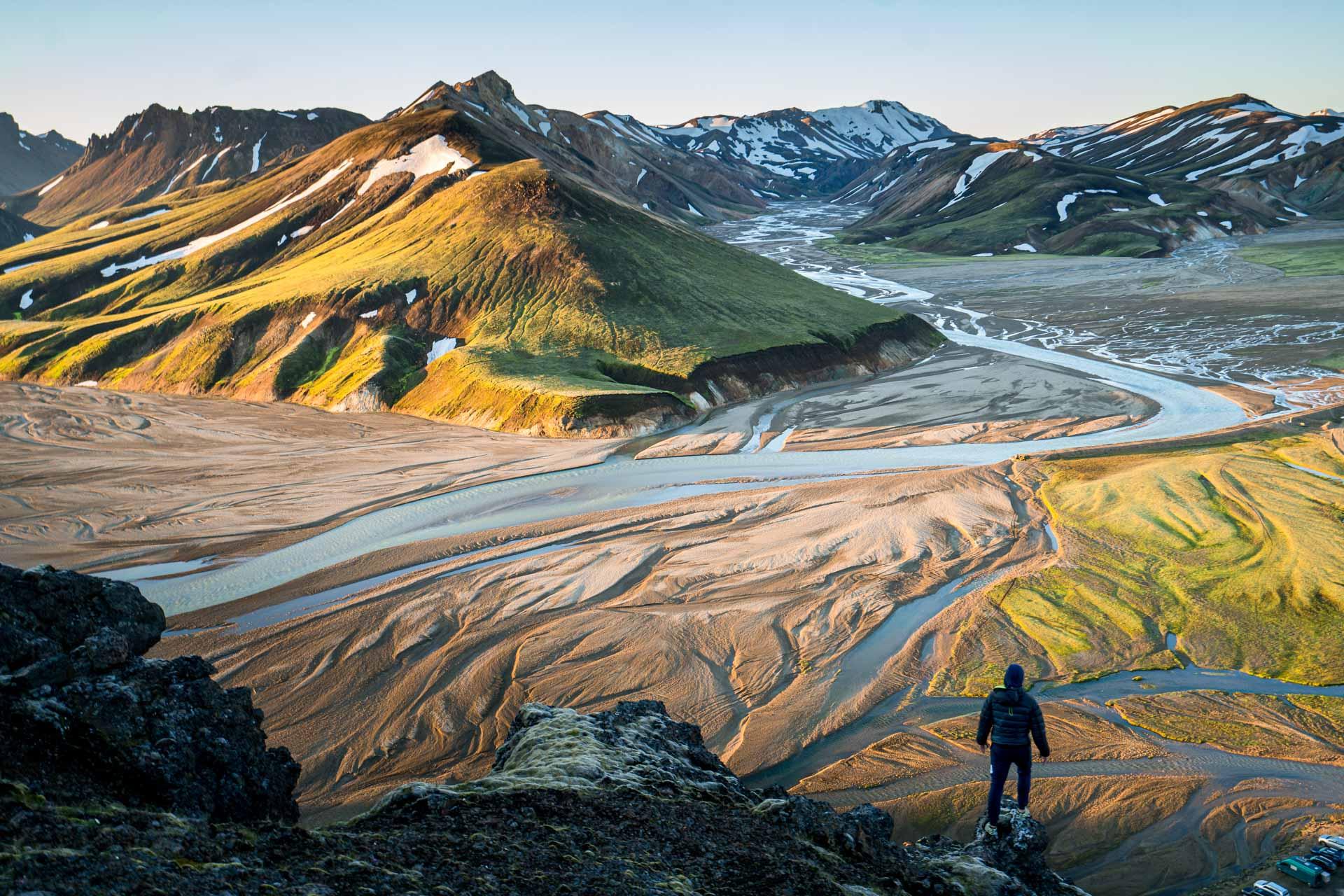
View of the colorful, rugged river valley of Landmannalaugar
Planning Your Hike
A safe and successful hike in Iceland’s remote areas begins with thorough planning and research. The country’s stunning but unforgiving landscapes require hikers to be well-prepared for its unpredictable weather and challenging terrain.
Proper planning is for your safety. Researching trails is crucial, as it helps you choose routes that match your experience and physical condition while preparing you for the specific challenges you might encounter. Understanding the trail's difficulty, length, and terrain ensures a safer, more enjoyable experience and reduces the risk of encountering dangerous situations.
Recommendations for Research:
To assist in your preparation, we highly recommend utilizing the wealth of resources available on our Adventure Blog. We offer numerous articles designed to help hikers of all experience levels make informed decisions about their adventures in Iceland:
- Best Hikes in Iceland: Discover some of the most popular and scenic trails across the country, including details on difficulty, duration, and what to expect.
- Best Hikes Near Reykjavik: For those staying in the capital, explore accessible day hikes that offer a taste of Iceland’s natural beauty without venturing too far from the city.
- Hiking the Icelandic Highlands in Winter: Winter hiking presents unique challenges, and our article provides essential tips on staying safe and making the most of Iceland’s snowy landscapes.
- How to Hike Solo: If you’re considering a solo adventure, our guide offers valuable advice on preparation, safety, and navigation for hiking alone in Iceland.
- Hiking Iceland's Volcanoes: For those looking to explore Iceland's volcanoes and eruption sites.
- Guide to Fjallabak Nature Reserve: A comprehensive guide for hikers seeking to explore some of the most scenic trails in Iceland’s Highlands.
- Iceland's Highest Peak, Hvannadalshnúkur: Your ultimate guide to conquering Iceland’s tallest mountain.
- How to Plan Your Visit to Skaftafell National Park: Essential tips and information for hikers planning an adventure in South Iceland’s Skaftafell Nature Reserve.
If you’re searching for something very specific and can’t find the information on our blog, don’t hesitate to reach out to our local Search and Rescue (SAR) team via chat or email. They are highly knowledgeable about Iceland’s trails and can provide tailored advice or additional information based on your needs.

Some hikes are easy, while others are demanding but rewarding
Purchase High-Quality Local Hiking Maps
While digital maps and GPS devices are useful, it’s always wise to carry a high-quality physical map of the area you plan to hike. Local hiking maps are specifically designed to reflect the unique terrain and features of Iceland’s wilderness, often including details not found on general maps.
These maps are invaluable for navigation, especially in areas where GPS signals might be unreliable or where you may need to detour due to weather or other unforeseen conditions. High-quality maps are available at outdoor shops, visitor centers, and online.

Understanding Local Regulations
Iceland’s pristine natural environments are carefully protected, and for good reason. The country’s unique landscapes, from its volcanic fields to its fragile moss-covered plains, are delicate and easily impacted by human activity. Understanding and adhering to local regulations is not only a legal requirement but also a crucial part of responsible hiking in Iceland.
Iceland’s remote areas often fall within national parks, nature reserves, or private lands, each governed by specific regulations. These rules are designed to preserve the natural environment, protect wildlife, and ensure that hikers have a safe experience. In these protected areas, camping is only permitted in designated spots to minimize environmental impact. For example, in popular areas like Þórsmörk or Landmannalaugar, or along the Laugavegur trail, wild camping is strictly forbidden.
Off-trail hiking is generally discouraged or outright prohibited in many areas, especially where the terrain is particularly fragile, such as in the highlands or near volcanic sites. Staying on marked trails not only protects the environment but also reduces the risk of getting lost in unfamiliar and potentially hazardous terrain.
Notify Authorities About Your Hiking Plans
Notifying the SAR about your hiking plans is crucial, especially in isolated regions. Filing a trip plan involves sharing your route, estimated return time, and contact details.
This plan should include your route, expected stops, estimated time of return, and any contingency plans for bad weather or other unforeseen circumstances. If you don’t return as planned, this information can help search and rescue teams locate you quickly.

Hikers in the icelandic Highlands
Selecting the Right Time of Year
Choosing the right time of year to hike in Iceland’s remote areas is crucial to ensuring a safe and enjoyable experience. Iceland’s climate is highly variable, and trail conditions can differ dramatically depending on the season. While summer is generally the best time for most hikers to explore these remote regions, winter offers unique challenges that are only suitable for the most experienced mountaineers seeking serious training.
Differences in Trail Conditions Across Seasons:
- Summer (June to August): Summer is the prime hiking season in Iceland. Trails are generally free of snow, rivers are more manageable to cross, and the long daylight hours provide ample time to complete hikes. The highlands, which are inaccessible for most of the year, open up during summer, offering access to some of the most breathtaking and remote landscapes in Iceland.
- Spring (April to May) and Autumn (September to October): These shoulder seasons present a mix of conditions. In spring, trails can still be covered with snow, especially at higher elevations, and river crossings may be more challenging due to snowmelt. In autumn, the trails begin to close as temperatures drop and snow begins to fall again. Both seasons offer fewer crowds, but the weather can be unpredictable, with a mix of rain, snow, and fog.
- Winter (November to March): Winter hiking in Iceland is only advisable for experienced mountaineers. Trails are often buried under snow, daylight is limited to just a few hours, and the weather can be severe, with storms, heavy snowfall, and extreme cold. Navigation is challenging, and specialized equipment like crampons, ice axes, and GPS devices are essential. Winter conditions can be treacherous, making this season suitable only for those seeking rigorous training in harsh conditions.
For most hikers, summer is the recommended time to explore Iceland’s remote areas, providing the best conditions for a safe and rewarding experience.
Winter should only be considered by those with significant mountaineering experience and the appropriate gear, as the risks are considerably higher.
The shoulder seasons offer unique opportunities but require flexibility and a willingness to face potentially challenging conditions.

Understanding Iceland’s Weather
Iceland’s weather is as dynamic and unpredictable as its landscapes, making it one of the most crucial factors to consider when planning a hike. Proper preparation and a keen awareness of the weather can be the difference between a memorable adventure and a dangerous situation.
Weather Forecasting Resources
Given Iceland’s unpredictable weather, staying informed about current and forecasted conditions is critical. There are several reliable sources to check the weather before and during your hike:
- Icelandic Meteorological Office (IMO): The IMO (vedur.is) provides detailed and up-to-date weather forecasts, including wind speed, precipitation, temperature, and warnings for severe weather. They also offer specialized forecasts for highland areas, which are particularly useful for remote hikes.
- Belgingur: for reliable and detailed weather forecasts Belgingur is an excellent resource for hikers. It provides real-time updates on weather conditions, including wind, precipitation, and temperature, helping you plan and adjust your hikes accordingly.
- SafeTravel.is: This site provides weather alerts, trail conditions, and safety tips specifically for travelers in Iceland. It’s especially valuable for hikers planning routes in more isolated areas.
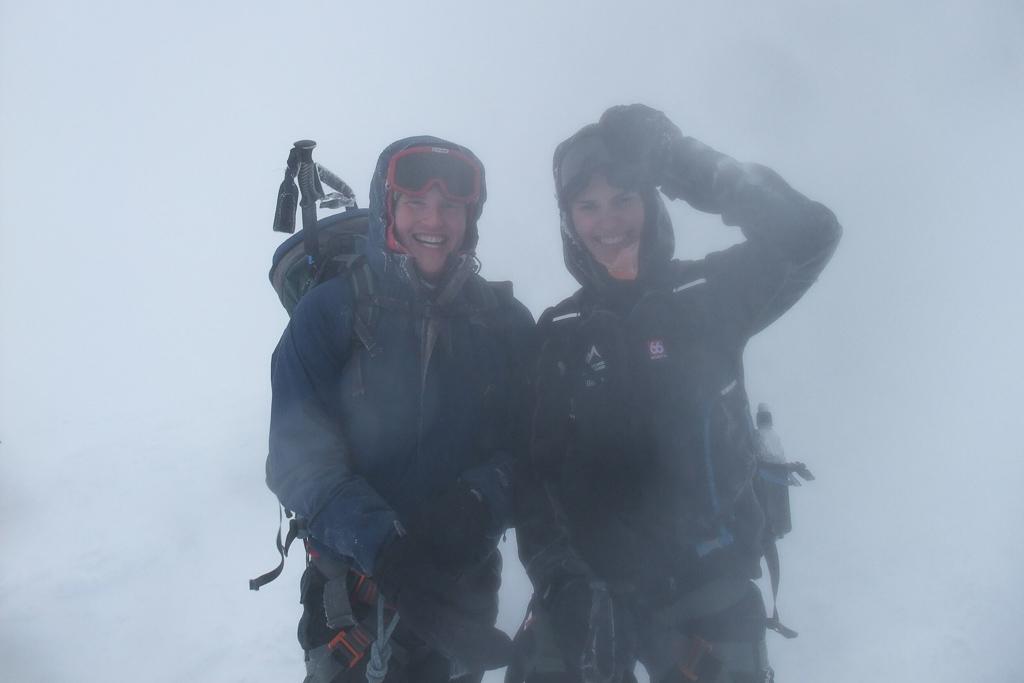
Challenging weather isn't uncommon in Iceland.
Importance of Adjusting Plans Based on Weather Conditions
Even with the best-laid plans, weather can dictate whether it’s safe to proceed with your hike. Flexibility is key—if the forecast indicates severe weather, such as strong winds, heavy rain, or snow, it’s wise to postpone or alter your hike. Iceland’s mountains and highlands can be particularly hazardous during bad weather, as visibility can drop rapidly, and trails can become dangerous. Always prioritize safety over sticking to your original plan, and be prepared to turn back if conditions worsen unexpectedly.
Preparing for Extreme Weather
Proper preparation for Iceland’s extreme weather is essential, as conditions can change quickly and become life-threatening if you’re not adequately equipped.
Clothing and Gear Recommendations for Different Weather Scenarios:
- Layering: The key to staying comfortable in Iceland’s varying conditions is layering. Start with a moisture-wicking base layer, add an insulating layer such as fleece or down, and finish with a waterproof and windproof outer shell. This system allows you to adjust your clothing as temperatures and activity levels change.
- Waterproof Gear: Always carry a high-quality waterproof jacket and pants. Iceland’s rain can be relentless, and staying dry is crucial to maintaining body heat. Waterproof gloves and gaiters can also protect against the wet and cold.
- Wind Protection: Iceland is known for its strong winds, particularly in open areas like the highlands or coastal cliffs. A windproof outer layer, along with a hat and gloves, can help prevent windchill and exposure.
- Insulation: Even in summer, temperatures can drop significantly, especially in higher elevations or at night. Pack an insulating layer such as a down jacket, which provides warmth without adding much weight to your pack.
- Footwear: Sturdy, waterproof hiking boots with good ankle support are essential. Trails can be wet and muddy, and river crossings are common. Ensure your boots are well broken in before your hike. bringing a pair of waterproof storm socks can provide extra protection and comfort in wet conditions.
- Hiking Poles: Hiking poles are invaluable for maintaining balance and reducing strain on your knees, especially on uneven or steep terrain. They can also help stabilize you during river crossings and provide additional support when carrying a heavy pack.
- First Aid Kit: A well-stocked first aid kit is crucial for treating minor injuries or stabilizing a more serious condition until help arrives. Include essentials like bandages, antiseptic wipes, pain relievers, blister treatment, and any personal medications.
- Storm Shelter or Dothy Bag: A lightweight, portable rescue shelter can provide essential aid in an emergency, protecting you from wind, rain, and cold while you wait for help.
- Thermal Foil Blanket: Also known as an emergency blanket, this compact, reflective blanket is designed to retain body heat and is essential for preventing hypothermia in cold or wet conditions.
- Navigation Tools: In addition to maps and a compass, consider carrying a GPS device and extra batteries to ensure you can navigate even in poor visibility or difficult terrain.
- Headlamp: A reliable headlamp with extra batteries is essential, particularly during Iceland’s shorter days or if you find yourself hiking later than planned. The period when headlamps are not needed is from mid-May to early August.
- Dry Bags: Use dry bags to keep your gear, especially electronics and clothing, dry in wet conditions. They are crucial for protecting your essentials during river crossings or in heavy rain.
- An Extra Set of Dry Clothes: Always carry a set of dry clothes, including socks and a thermal layer, in a waterproof bag. Changing into dry clothing after getting wet can prevent hypothermia and keep you comfortable.
- Emergency Signals: Carry emergency signals such as a whistle, signal mirror, and a Personal Locator Beacon (PLB). This is a distress radio beacon that transmits location information about you directly to Search and Rescue forces, especially useful in remote areas where network coverage and visibility might be limited.

One of the many happy groups we've guided along the trails of Iceland
Tips for Staying Safe in Rain, Wind, Snow, and Fog:
- Rain: In heavy rain, trails can become slippery and streams may swell. Ensure your gear is waterproof, and take care when crossing wet terrain. Keep electronics and important items in waterproof bags inside your pack.
- Wind: High winds can make walking difficult and increase the risk of hypothermia. Avoid exposed ridges and peaks during strong winds, and secure all loose items. If wind speeds are dangerously high, seek shelter and wait for conditions to improve.
- Snow: Even in summer, snow can be present in higher elevations. Be cautious of snowfields and ice, which can be slippery and conceal hazards like crevasses. In winter, consider using crampons and an ice axe, and be aware of avalanche risks.
- Fog: Fog can reduce visibility to near zero, making navigation challenging. Always carry a map and compass, and consider using a GPS device. If fog sets in, slow down, stay on the trail, and avoid making risky decisions based on limited visibility.

The ground around the Fimmvörduháls pass was still smoking a few years ago
Understanding Icelandic Terrain
Iceland’s terrain in remote areas is as varied as it is challenging, with conditions that can change significantly over short distances. Volcanic rock is a common feature, especially in areas shaped by recent eruptions. These fields of jagged lava rock are difficult to traverse due to their uneven surfaces and sharp edges, which can be tough on footwear and risky for injuries if you’re not cautious.
Glaciers, another prominent feature in Iceland’s highlands, offer stunning views but also significant hazards. Glacier travel demands specialized knowledge and equipment, such as crampons and ice axes, and should only be attempted by experienced hikers or with a professional guide. Hidden crevasses and icefalls make glacier navigation extremely dangerous. River crossings are another frequent challenge, especially in remote trails.
Depending on recent weather conditions, rivers can range from shallow streams to fast-moving, deep waters. The terrain around rivers is often rocky and unstable, making crossings particularly tricky.

Navigation Techniques
When hiking in Iceland’s remote areas, proper navigation is crucial. Even well-marked trails can become obscured by weather or the terrain itself, so knowing how to use maps, compasses, and GPS devices is essential.
- Always carry a detailed topographical map of the area. While GPS devices are incredibly useful, they can fail due to battery issues or poor satellite reception. A map provides a reliable backup and helps you understand the broader landscape, including elevation changes, water sources, and potential hazards. A compass is another essential tool for orienting yourself, especially in areas where landmarks are scarce or visibility is low.
- Practice using your compass with a map before your hike to ensure you can accurately determine your direction and stay on course. GPS devices can be invaluable for pinpointing your exact location, particularly in Iceland’s vast and featureless landscapes. However, don’t rely solely on GPS; always have a map and compass as backups.
- Keep your GPS fully charged and consider carrying a portable charger to ensure it remains operational throughout your hike. Staying on the trail is vital for safety and environmental reasons. Many trails in Iceland are marked with cairns or painted markers. Keep an eye out for these, but don’t rely on them entirely, as they can be hard to spot in bad weather or may have been displaced.
- Regularly check your position on your map and GPS, especially after significant changes in terrain or direction. This habit helps you stay aware of your location and quickly correct any deviations from your intended route.
- Stick to established trails as much as possible. Off-trail hiking increases the risk of getting lost, encountering dangerous terrain, or causing environmental damage. If you must deviate from the trail, do so with caution and ensure you can navigate back to it.

River crossings are a common challenge in Iceland’s remote areas, requiring proper preparation and technique. Assess the river’s depth, speed, and width before crossing. If water is above your knees, flows rapidly, or seems too deep, it may be unsafe—consider waiting or finding another route.
The safest crossing is usually at the river’s widest, shallowest point. Use a trekking pole to check stability and unbuckle your pack for quick removal in case of a fall. If in a group, link arms for added stability, but be cautious not to overbalance each other.
Always prioritize safety, and if unsure, it’s better to turn back than risk a dangerous crossing. With the right preparation, you can safely explore Iceland's stunning landscapes.

Viiewpoint over a glacier in Skaftafell
Emergency Procedures
When hiking in Iceland’s remote areas, being prepared for emergencies is crucial. The country’s rugged landscapes and unpredictable weather can turn a simple hike into a serious situation if things go wrong. Developing a solid emergency plan and knowing what to do in a crisis can make all the difference.
Developing an Emergency Plan
Before setting out on your hike, it’s essential to develop an emergency plan. Start by informing someone of your hiking plans. This includes your intended route, estimated time of return, and any alternative plans in case conditions change. Make sure this person knows when to expect you back and who to contact if you don’t return on time.
Understanding emergency signals is another key part of your plan. In Iceland, a common distress signal involves using visual markers, such as arranging rocks or using brightly colored items to form a large “X” visible from the air. This signal can help search and rescue teams locate you more quickly if you’re stranded or injured. Additionally, familiarize yourself with local emergency procedures and signals that are recognized by rescue teams in Iceland.

What to Do in an Emergency
If an emergency arises during your hike, staying calm and following a clear procedure is vital. If you or someone in your group is injured, assess the situation and administer first aid as needed. If the injury is serious, stabilize the injured person and prepare for a potential wait while help arrives. If possible, move to a safer location away from immediate dangers like rockfalls or rapidly rising rivers.
Getting lost is another common emergency scenario. If you realize you’ve strayed from the trail, stop moving and try to retrace your steps to the last known location. Use your map, compass, and GPS to reorient yourself. If you cannot find the trail, it’s often best to stay put and signal for help rather than wander further off course.
In extreme weather conditions, such as sudden snowstorms or severe winds, seek shelter immediately. If you’re caught in bad weather without adequate shelter, create a makeshift one using a tent, tarp, or natural features like rocks. Protect yourself from exposure to the elements by layering clothing and using insulating materials to retain body heat. Remember that conserving energy is crucial in cold conditions, as hypothermia can set in quickly.

Contacting Emergency Services
If you find yourself in a situation where you need professional help, knowing how to contact emergency services in Iceland is critical. The emergency number in Iceland is 112, which connects you to all emergency services, including search and rescue. If you have cell service, you can dial this number directly. In areas with no cell coverage, having a satellite phone or a personal locator beacon (PLB) can be a lifesaver.
PLBs are devices that, when activated, send a distress signal with your GPS coordinates to emergency services. These devices are highly recommended for remote hikes where cell service is unreliable or nonexistent. Understanding local emergency response times is also important.
While Iceland’s search and rescue teams are highly trained and efficient, response times can vary depending on your location and the weather conditions. In very remote areas, it could take several hours or even longer for help to arrive. This underscores the importance of being prepared to sustain yourself and provide basic first aid until rescue teams can reach you.

Campers in the wilderness on the Askja trail with Herðubreið volcano in the background
Minimizing Environmental Impact
Hiking in Iceland’s remote areas offers a chance to experience some of the most pristine and untouched landscapes in the world. However, with this privilege comes the responsibility to minimize your environmental impact. By following best practices, you can help preserve Iceland’s natural beauty for future generations.
Preserving Iceland’s natural beauty is essential, not just for your enjoyment but for the countless others who will visit these landscapes after you. The Leave No Trace principles are a set of guidelines designed to minimize your environmental footprint while enjoying the outdoors.
These principles include packing out all trash, even biodegradable items like food scraps, to prevent wildlife from becoming dependent on human food and to keep the trails clean. When it comes to waste disposal, always use designated restrooms when available. If nature calls when you’re far from facilities, ensure you’re at least 200 feet from water sources and trails, and bury waste in a shallow hole.
Avoid using soap, even biodegradable types, in natural water sources, as it can still disrupt aquatic ecosystems. Another key principle is minimizing campfire impact. In many areas, particularly fragile environments like Iceland’s moss-covered landscapes, it’s better to avoid campfires altogether and use a camp stove for cooking. If you must build a fire, use established fire rings and burn only small sticks found on the ground, ensuring the fire is completely extinguished before leaving.

Respecting Local Wildlife
Iceland’s wildlife is a significant part of its natural charm, but it’s important to interact with animals responsibly to avoid disturbing them or their habitats. Iceland is home to a variety of wildlife, including Arctic foxes, seabirds, and marine mammals like seals and whales. Many of these species inhabit fragile ecosystems that can be easily disrupted by human activity. To safely observe wildlife without causing harm, maintain a respectful distance—use binoculars or a zoom lens for a closer view.
Never feed wild animals, as this can lead to dependency on humans, disrupt their natural behaviors, and even make them more vulnerable to predators. When hiking near bird nesting areas, be especially cautious. Birds, particularly ground-nesting species like puffins and Arctic terns, can be easily disturbed by human presence. Stick to marked trails and avoid areas where birds are nesting, especially during the breeding season.
Protecting Fragile Ecosystems
Iceland’s landscapes include some of the most delicate ecosystems in the world, such as moss-covered lava fields, which can take centuries to regenerate if damaged. Staying on designated trails is crucial to protect these environments from the harmful effects of trampling. Off-trail hiking not only damages plant life but can also lead to soil erosion and the spread of invasive species.
Awareness of your impact is key. For example, avoid stepping on the country’s iconic moss, as it’s particularly vulnerable to damage. A single footprint can take decades to heal. Additionally, when crossing rivers, choose paths that minimize erosion and avoid widening the crossing by repeatedly fording different spots.
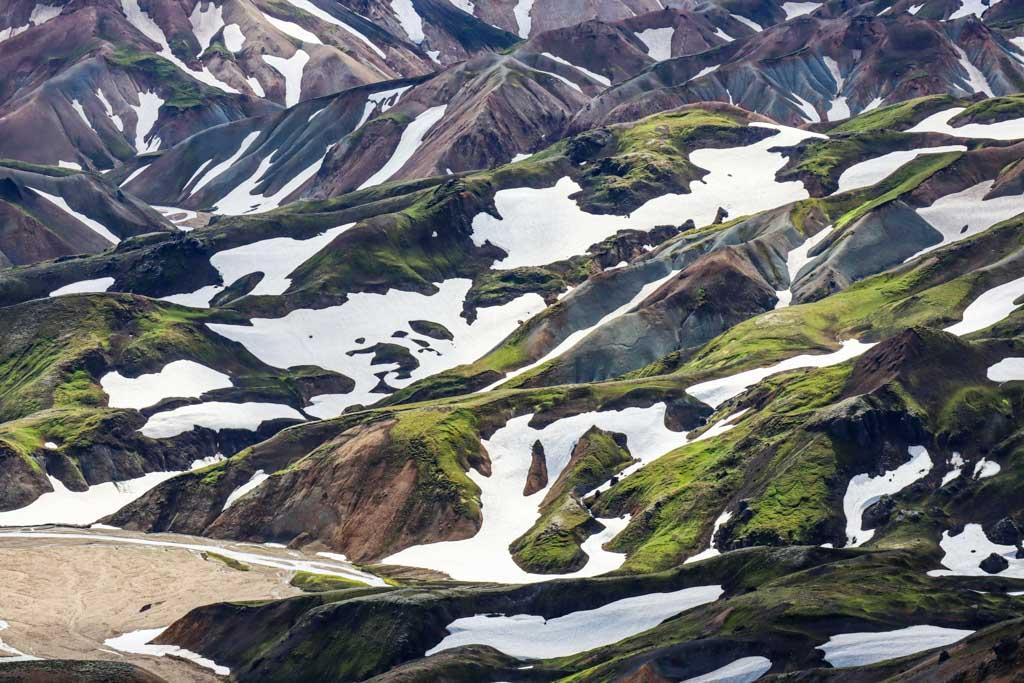
The Benefits of Guided Hiking Tours
For those who want to explore Iceland’s remote areas while minimizing their environmental impact, guided hiking tours offer significant benefits. Professional guides are not only familiar with the terrain but also knowledgeable about local ecosystems and wildlife. They can ensure that your hike follows best practices for environmental stewardship, reducing your impact on the landscapes you traverse.
Guided tours also provide an opportunity to learn more about Iceland’s natural and cultural history, as guides often share insights that deepen your understanding and appreciation of the areas you’re exploring. Moreover, by joining a guided tour, you’re supporting sustainable tourism practices that prioritize the preservation of Iceland’s natural beauty. This is particularly important in popular or sensitive areas where the cumulative impact of many visitors can be significant.
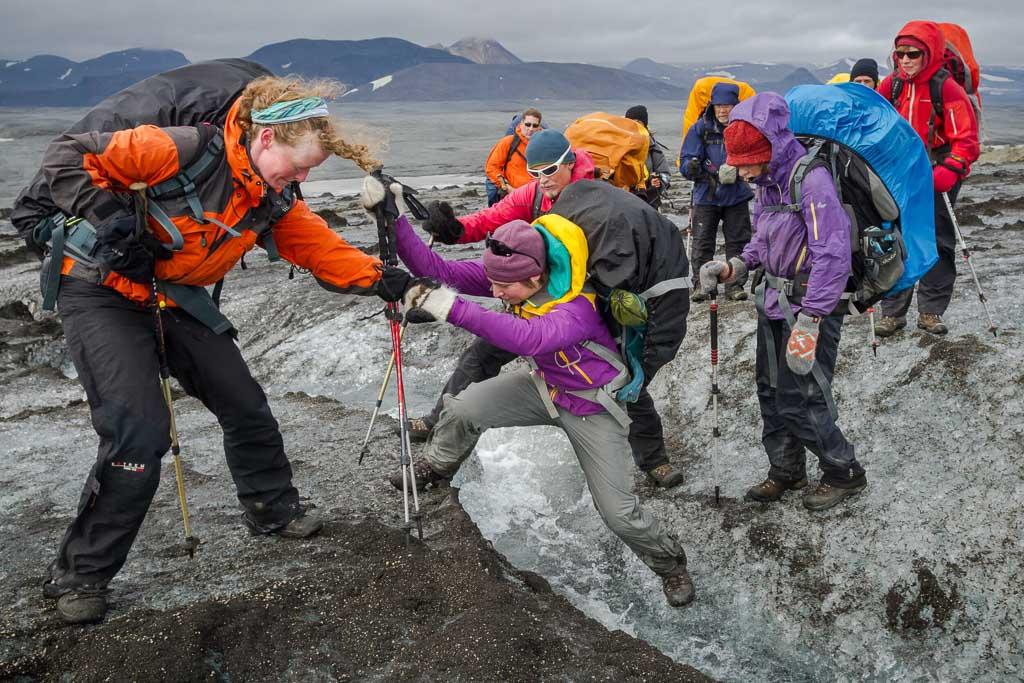
As you prepare to explore Iceland’s breathtaking remote landscapes, remember that safety, preparation, and respect for the environment are paramount. Thoroughly research your trail, understand local regulations, and choose the right season for your hike. Master navigation techniques, be ready for Iceland’s unpredictable weather, and always have an emergency plan in place.
Hike responsibly by following Leave No Trace principles, staying on designated trails, and observing wildlife from a distance. For a safer and more enriching experience, consider joining a guided tour with Icelandic Mountain Guides, who offer expert knowledge and a commitment to preserving Iceland’s natural beauty.
Embrace the adventure responsibly, ensuring that both you and Iceland’s wilderness remain safe and preserved for future explorers.
Keep me informed about the Icelandic Mountain Guides Blog
Outdoor adventure in Iceland is our specialty. Subscribe to our free monthly newsletter to learn when to go, what to do and where to have the best adventures in Iceland.
Related Blog Posts

The Best Hikes Near Reykjavík: A Hiker’s Guide to Iceland's Capital
2023-05-02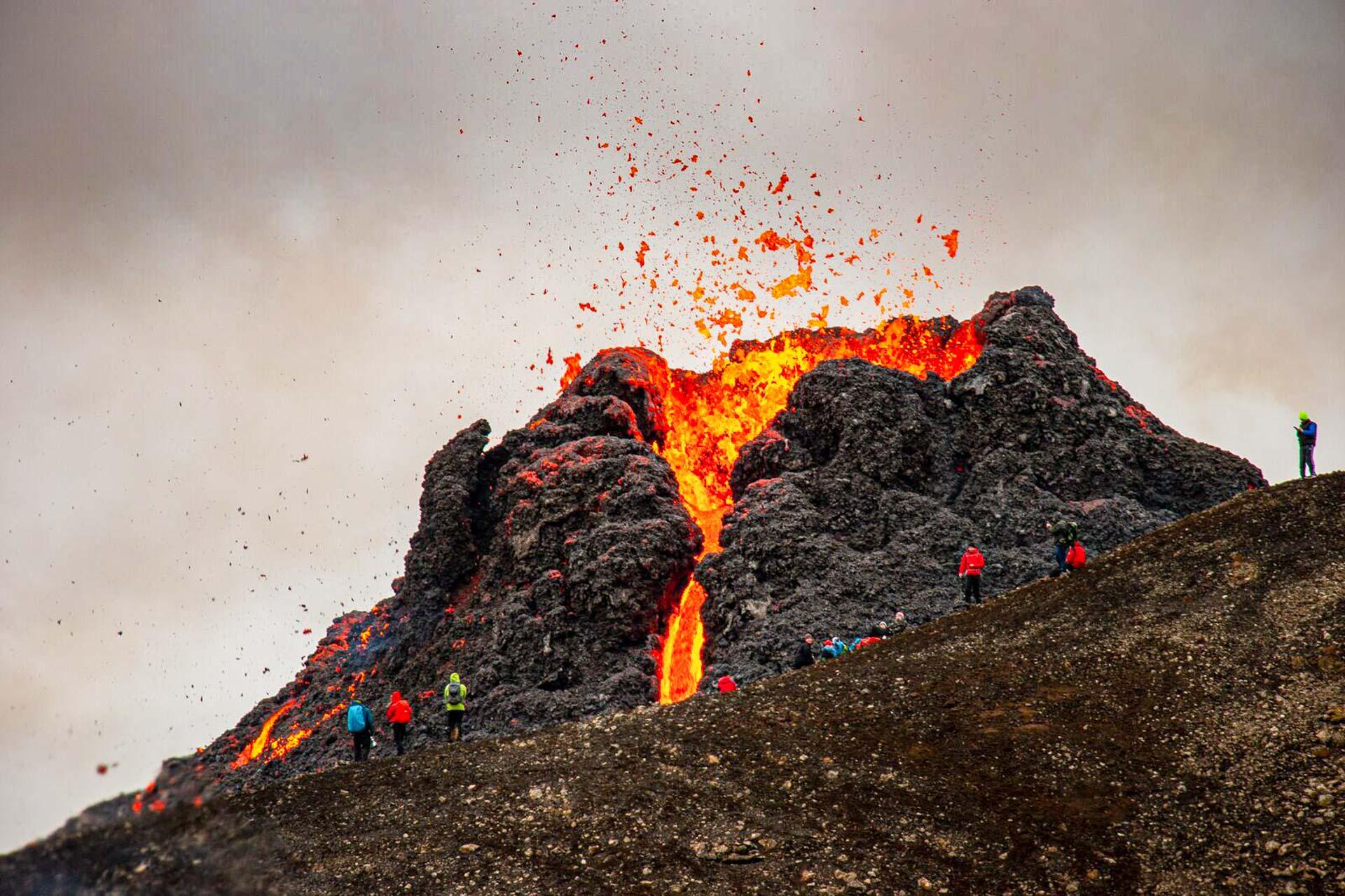
Hiking Iceland's Volcanoes: Your Ultimate Guide
2023-07-13
Your Ultimate Guide to Sólheimajökull
2022-08-16
Your Ultimate Guide to Mýrdalsjökull
2022-09-26
The Ultimate Guide to Hiking in Iceland
2022-03-25
The Ultimate Guide to Skaftafell
2022-06-08
Your Guide to the Icelandic Mountain Guides' Adventure Ground
2022-07-25
A Complete Guide to Solo Hiking in Iceland
2024-11-06
The Ultimate Guide to Glaciers and Glacier Hikes in Iceland
2023-03-29
Related Tours

Vatnajökull Glacier Expedition
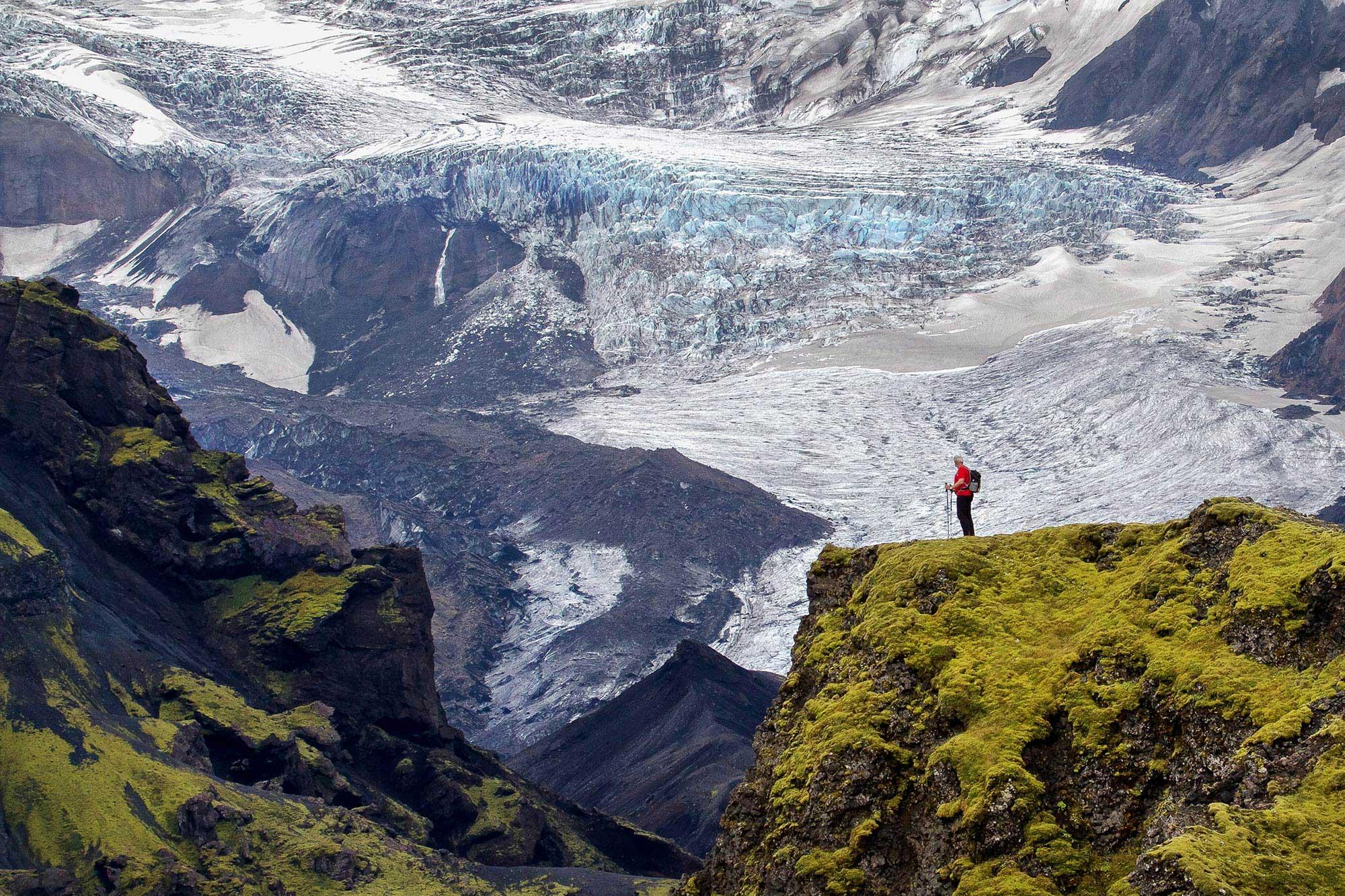
Laugavegur & Fimmvörðuháls Combo Tour

Volcanic Trails

In the Shadow of Vatnajökull

Off the Beaten Path in Fjallabak Nature Reserve

4-Day Thorsmork Glacier Valley Hiking Adventure

Snæfellsjökull Summit Hike

Hvannadalshnúkur - Iceland’s Highest Summit

Núpsstaðaskógar Skaftafell

Coast to Coast - The Iceland Traverse
